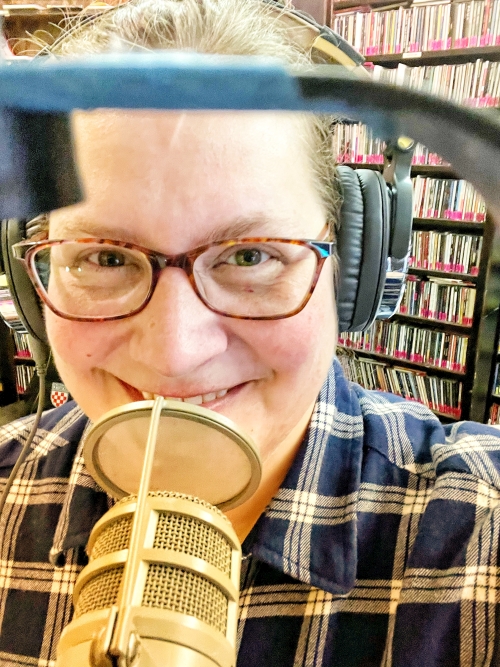In 2009, I started volunteering at WRIR, a low-power FM community radio station located in the heart of Richmond, Virginia. Initially, I was simply an overnight DJ playing whatever music I felt like, moving time slots as more favorable to me options became available.
I liked playing anything from the new rock and “adult album alternative” (aka singer/songwriter, folk, etc.) shelves, as well as anything else that caught my eye. But around 2013, I noticed there weren’t many/any new releases being shelved.
That’s when I found out that the music director at the time was a college student who was away that year for study abroad, and no one had stepped up to fill in. Seeing my interest in the new music workflow, the World music director encouraged me to take this on. I’ve been doing it now for almost a decade, and I thought it might be interesting to share some of what I do every week, though it has changed quite a bit as the dominate format of music sent to us is digital files rather than physical media.
The first thing I do is go through the music director email inbox and download the albums and EPs sent by promoters or record labels. I keep a spreadsheet of all the details. Originally it was to also keep track of what got played and communicate that back to the sources, but it wasn’t sustainable and now that we use a playlist tool, I can theoretically run reports from that (or the interested parties can pay that provider to send them reports). Now I only use it for internal workflows.
Once I have everything downloaded and the compressed files unzipped, I use the spreadsheet to quickly format standard naming structures for each folder that represents an album or EP: Artist – Title (Label, Year). I’m a librarian — I can’t not impose some sort of structure to the way these get organized!
After that, I go back through all the emails. Promoters and record labels often send useful information about the recordings, such as recommended tracks, any songs with FCC prohibited language, similar artists, and often a brief description of the music. I will copy/paste that information (and reformat it somewhat so that the major points are consistent) into a text file that lives in the folder with the MP3s.
Then, I use a program to edit the MP3 tags. You’d be surprised by how many promoters and record labels send out MP3s to radio stations without ensuring that someone later on will know what the heck it is. About once every few months, I’ll even get one where the songs are just labeled track 1, track 2, etc., and I have to try to find the information elsewhere. This is also when I try to figure out the genre for the recording.
After all that is done, I move the folder to one of our large genre buckets: Rock, AAA, Hip-Hop, Loud, or RPM. If I get anything that might fall under World or Jazz, we still have genre directors for those areas and I just pass it along to them instead.
Tangent: These genre buckets have been around for a while because they were what the now defunct CMJ New Music Report used to designate genre charts. We switched over to reporting to the North American College & Community Radio Chart in 2017 when CMJ stopped publishing the New Music Report, and they changed a few of the genre labels. Namely, AAA went away and for us was replaced by Folk, and Loud became Heavy. It didn’t seem worth it to change our labeling at the time, and it still doesn’t.
When I’ve finished that week’s new music, I transfer the files to the station’s server where we keep a “digital music library” and send the details to the DJ list. Any of our active DJs can get access to this server and make use of the music for programming their shows.
At this point, about once I month I will sort through the physical media sent to the station. Some of it duplicates the digital copies we already have, and if it’s something that I know our DJs will like, I may slap a sticker on it with a review by a music reviewer and some recommended tracks, and put it on the shelf in the studio. Some of it is new to us and I may rip a copy for the digital music library. Some of it is “bless your heart, you tried” and it goes into the freebie bin for DJs to sort through and make choices about it for themselves.
The reality is, we get 30-50 recordings a week, and I don’t want to spend all of my free time on this volunteer work. The new music workflow is also not the only thing I do at the station, and I’ve worked to streamline it as much as possible. I still enjoy it and it definitely feels good to be able to impose some order on what would otherwise be a chaotic mess.

